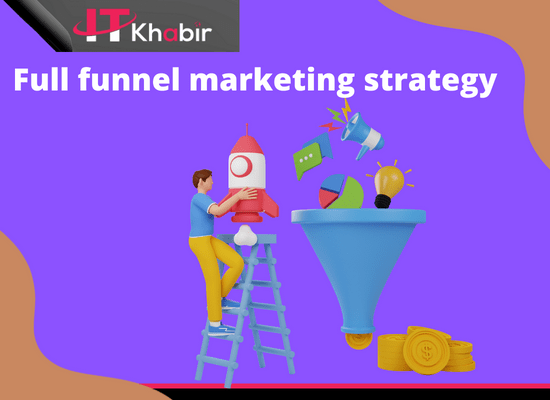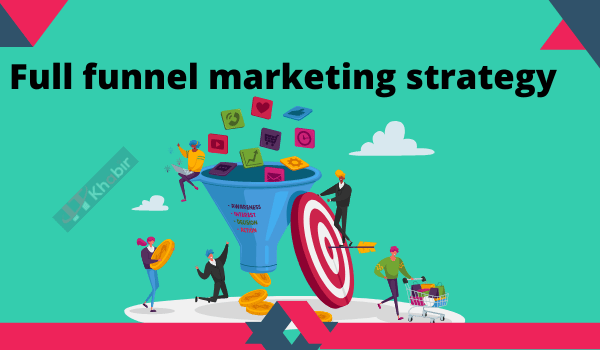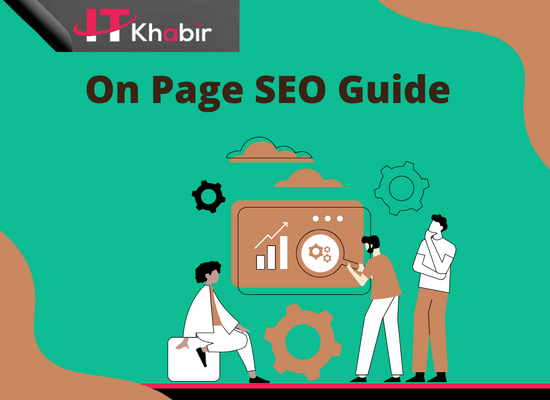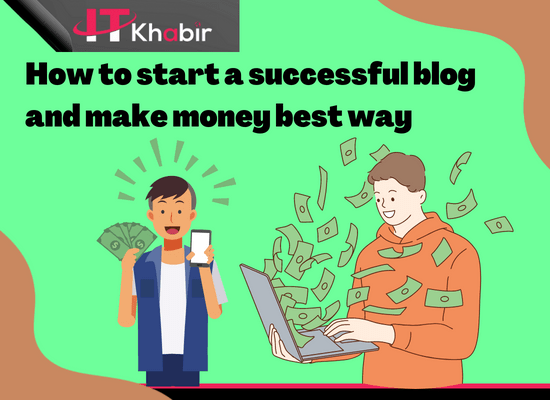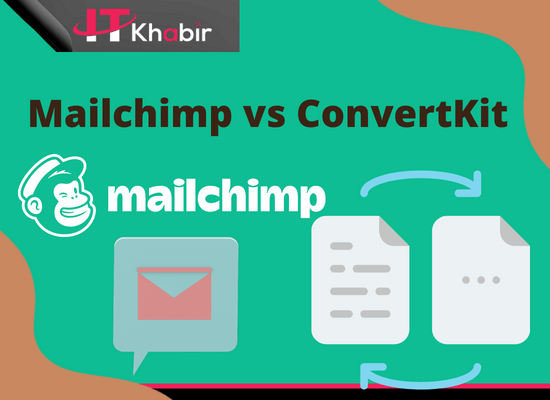The Full Funnel Marketing Strategy is a comprehensive approach to marketing that takes into account all stages of the customer journey, from awareness to purchase and beyond. By creating a holistic marketing strategy that addresses each stage of the customer journey, businesses can more effectively nurture leads and drive conversions.
The Full Funnel Marketing Strategy has four key components:
- Awareness: Creating content and ads that generate interest in your product or service
- Consideration: Nurturing leads with targeted content that helps them understand your offering
- Decision: Driving conversions with compelling calls to action
- Loyalty: Retaining customers with ongoing engagement and support
By taking a Full Funnel approach to marketing, businesses can more effectively nurture leads and drive conversions at every stage of the customer journey.
.Meet with Top email marketing platform
Full funnel marketing strategy
As the name suggests, Full Funnel Marketing is a marketing strategy that takes a potential customer from the very top of the marketing funnel, through the entire funnel, and all the way to the bottom.
The goal of Full Funnel Marketing is to turn as many people as possible into paying customers, or at least into leads that can be sold to paying customers.
There are a number of different marketing strategies and tactics that can be used at each stage of the funnel, but some of the most common and effective ones include:
1. Creating Awareness: The first step is to get potential customers to become aware of your product or service. This can be done through various marketing channels such as paid advertising, public relations, or content marketing.
2. Generating Interest: Once potential customers are aware of your product or service, you need to generate interest in it. This can be done through effective marketing campaigns, compelling content, or by offering free trials or samples.
3. Creating Desire: The next step is to get potential customers to desire your product or service. This can be done by highlighting the benefits and features of your offering, or by creating a sense of urgency.
4. Taking Action: Finally, you need to get potential customers to take action and purchase your product or service. This can be done by offering discounts, special offers, or by making the buying process as easy and convenient as possible.
Full Funnel Marketing is a powerful marketing strategy that can be used to increase sales and conversions. By using various marketing tactics at each stage of the funnel, you can effectively turn potential customers into paying customers.
Awareness stage marketing objectives
The Awareness stage is the first stage of the consumer decision making process. It is when the consumer becomes aware of a problem or need and begins to search for information on potential solutions.
At this stage, marketing objectives should be focused on getting the consumer’s attention and creating interest in the product or service. This can be done through various marketing channels such as advertising, public relations, and social media.
The goal is to generate leads and begin the sales process. It is important to remember that consumers at this stage are not yet ready to buy, so the focus should be on creating awareness and interest, rather than selling.
20 marketing tactics for the awareness stage.
- 1. Use social media platforms to generate interest and awareness about your brand or product. This could involve creating a strong social media presence, running ads, or holding contests or giveaways.
- 2. Get involved with influencer marketing. This could involve working with popular bloggers or social media personalities to promote your brand or product.
- 3. Use paid advertising to reach a wider audience with your message. This could involve running ads on Google, Facebook, or other platforms.
- 4. Create informative and attention-grabbing blog content that covers topics related to your brand or product. Be sure to include calls to action to encourage readers to learn more about your offering.
- 5. Develop strong search engine optimization (SEO) for your website to ensure that your brand or product comes up when people search for relevant terms.
- 6. Make use of email marketing to reach your target market with information about your brand or product. Be sure to include strong calls to action and eye-catching visuals.
- 7. Develop an effective lead generation strategy to capture the contact information of potential customers who are interested in your brand or product.
- 8. Use retargeting ads to reach people who have already visited your website or shown interest in your brand or product.
- 9. Host events or webinars related to your brand or product. This could be an excellent way to generate interest and awareness.
- 10. Get involved with charity work or causes that are related to your brand or product. This is a great way to show that you care about more than just making a profit.
- 11. Sponsor a local sports team or event. This is a great way to get your brand in front of a large number of people.
- 12. Invest in outdoor advertising, such as billboards or bus stops. This can be a great way to reach people who are out and about.
- 13. Develop strong relationships with media outlets and pitch them story ideas that are relevant to your brand or product.
- 14. Invest in print advertising in magazines or newspapers that are relevant to your target market.
- 15. Give away free samples of your product or offer free trials to encourage people to try out your offering.
- 16. Place your brand or product in high-traffic areas, such as shopping malls or airports.
- 17. Develop an innovative and attention-grabbing marketing campaign that really stands out and gets people talking.
- 18. Team up with another brand or business in a joint marketing campaign. This could be a great way to reach a new audience.
- 19. Make use of guerrilla marketing techniques to really stand out from the crowd.
- 20. Keep your marketing fresh and up-to-date, and always be on the lookout for new and creative ways to reach your target market.
Top-of-funnel marketing that works
As the first step in the sales funnel, top-of-funnel marketing is crucial to getting prospects interested in your product or service. And yet, many businesses struggle to generate leads and convert them into customers.
If your top-of-funnel marketing is falling flat, it might be time to reevaluate your strategy. Here are some top-of-funnel marketing tips that can help you generate more leads and close more sales:
1. Define your target audience
One of the most common mistakes businesses make is failing to define their target audience. Without a clear understanding of who your target customer is, it will be difficult to create effective marketing campaigns.
Think about the characteristics of your ideal customer and use that information to create buyer personas. Once you have a good understanding of your target customer, you can start creating content and campaigns that appeal to them.
2. Create compelling content
Top-of-funnel marketing is all about generating interest in your product or service. And the best way to do that is to create compelling content that speaks to the needs of your target audience.
Your content should be informative and interesting, and it should be tailored to the specific stage of the buyer’s journey your prospects are in. For example, if you’re targeting people who are just starting to research their options, your content should be educational. But if you’re targeting people who are ready to make a purchase, your content should be more persuasive.
3. Use different channels
Another mistake businesses make is relying too heavily on one marketing channel. While it’s important to focus your efforts on the channels that are most effective for your business, you should also use a variety of channels to reach your target audience.
Some of the most popular marketing channels include paid advertising, social media, email marketing, and content marketing. Experiment with different channels and see which ones work best for your business.
4. Test and measure
Finally, don’t forget to test and measure your results. Top-of-funnel marketing is constantly evolving, and what works today might not work tomorrow. That’s why it’s important to test different strategies and tactics and see what works best for your business.
Keep track of your leads and customers, and analyze your conversion rate. This data will help you fine-tune your top-of-funnel marketing strategy and ensure that you’re getting the most out of your efforts.
By following these top-of-funnel marketing tips, you can generate more leads and close more sales. So if your current strategy isn’t working, don’t be afraid to try something new.
What is a sales funnel marketing strategy?
Sales funnels are one of the most important aspects of online marketing, yet they are often misunderstood. A sales funnel is simply a process that leads a potential customer from initial awareness of a product or service to eventually becoming a paying customer.
The sales funnel is often represented as a series of steps, starting with awareness and ending with conversion. However, it’s important to note that the sales funnel is not a linear process. In reality, potential customers often move back and forth between the different stages of the funnel, and some may never reach the final stage.
The typical sales funnel includes the following stages:
- Awareness: This is the stage where potential customers first become aware of a product or service. They may see an ad, read an article, or hear about it from a friend.
- Interest: Once potential customers are aware of a product or service, they will start to develop an interest in it. They may begin to research it, compare it to other options, and read reviews.
- Consideration: At this stage, potential customers are actively considering a product or service. They may be comparing different options, negotiating price, and trying to decide whether or not to make a purchase.
- Decision: This is the stage where potential customers finally decide whether or not to purchase a product or service. They may be influenced by a number of factors, including price, quality, and customer service.
The sales funnel is a key tool for online marketers, as it can help them to track the progress of potential customers and identify areas where they may need to make changes to their marketing strategy.
By understanding the sales funnel, marketers can make sure that they are doing everything possible to lead potential customers through the funnel to the final stage of conversion.
How do you create a marketing funnel strategy?
Are you looking to create a marketing funnel strategy? If so, you’re in the right place. In this article, we’ll share with you everything you need to know about marketing funnels, including what they are, how they work, and how you can create your own strategy.
What is a marketing funnel?
A marketing funnel is a process that businesses use to turn potential customers into actual customers. The funnel is made up of a series of steps that starts with awareness and ends with a sale.
The funnel works by moving potential customers through each stage of the process, with the goal of eventually converting them into paying customers.
The stages of the marketing funnel are:
Awareness: This is the first stage of the funnel, where potential customers become aware of your business and what you offer.
Interest: In this stage, potential customers start to take an interest in your products or services.
Consideration: In this stage, potential customers start to compare your products or services to those of your competitors.
Decision: In this stage, potential customers make a decision to buy your product or service.
The marketing funnel is a powerful tool that can help you to increase sales and grow your business. By understanding how the funnel works, you can create a strategy that will move potential customers through the funnel and eventually convert them into paying customers.
How does the marketing funnel work?
The marketing funnel works by moving potential customers through each stage of the process, with the goal of eventually converting them into paying customers.
The funnel works by providing potential customers with information about your products or services at each stage of the funnel. For example, at the awareness stage, you might provide potential customers with information about your business through ads or social media posts.
At the interest stage, you might provide potential customers with more information about your products or services, such as product descriptions or blog posts.
At the consideration stage, you might provide potential customers with even more information about your products or services, such as case studies or testimonials.
At the decision stage, you might provide potential customers with a final offer, such as a discount or free shipping, to encourage them to buy your product or service.
The marketing funnel is a powerful tool that can help you increase sales and grow your business. By understanding how the funnel works, you can create a strategy that will move potential customers through the funnel and eventually convert them into paying customers.
How can you create a marketing funnel strategy?
Now that you understand how the marketing funnel works, you can start to create your own funnel strategy. There are a few things to keep in mind when creating your funnel strategy:
1. Identify your target audience.
The first step in creating your funnel strategy is to identify your target audience. Who are you trying to reach with your marketing? Once you know who your target audience is, you can start to create content that is relevant to them.
2. Create content for each stage of the funnel.
As we mentioned earlier, the marketing funnel is made up of a series of stages. In order to move potential customers through the funnel, you need to create content for each stage.
For example, at the awareness stage, you might create an ad campaign. At the interest stage, you might create a blog post. At the consideration stage, you might create a case study. And at the decision stage, you might create a special offer.
3. Promote your content.
Once you’ve created your content, you need to promote it. There are a number of ways to promote your content, such as through social media, email marketing, or paid advertising.
4. Test and optimize your funnel.
Finally, you need to test and optimize your funnel. Try different things and see what works best for your business. Then, make changes to your funnel accordingly.
By following these steps, you can create a marketing funnel strategy that will help you increase sales and grow your business.
Related Articles
- Onlinecoursehost Review – Best Online Course Platforms That You’ll Love
- Oode Lifetime Deal – Is A Best Business Management Platform.
Full funnel marketing strategy Final Thought
The Full Funnel Marketing Strategy is an effective way to reach your target market and convert them into customers. It is a comprehensive approach that takes into account all aspects of the customer journey, from awareness to purchase.
By creating relevant and targeted content at each stage of the funnel, you can nurture leads and build relationships that will lead to conversions.
.Meet with Top email marketing platform


